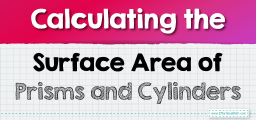Unlocking the Secrets of Inscribed Polygons

- Inscribed Polygon: A polygon is said to be inscribed in a circle if all its vertices lie on the circle. The circle is then called the circumscribed circle of the polygon.
- Any side of the inscribed polygon is also a chord of the circle.
- The angle subtended by a chord at the center is double the angle subtended by it at any point on the remaining part of the circle. This becomes particularly interesting for inscribed polygons.
- The sum of the opposite angles of any quadrilateral inscribed in a circle is \(180^\circ\).
- In an inscribed triangle, the length of its sides can determine the circle’s radius using certain relationships, such as the circumradius formula.
Examples
Practice Questions:
- A regular hexagon is inscribed in a circle of radius \(4 \text{ cm}\). What is the length of one side of the hexagon?
- An equilateral triangle is inscribed in a circle. If one side of the triangle is \(9 \text{ cm}\), can you determine the circle’s radius?
- Each side of the hexagon is equal to the chord of the circle subtended by \(60^\circ\). Using the formula for chord length: \( c \approx 2 \times 4 \times \sin(30^\circ) = 4 \text{ cm}\).
- For an equilateral triangle inscribed in a circle with a side length of \(9 \text{ cm} \), by using the Pythagorean theorem on the right triangle formed with the radius and half the triangle’s side, the circle’s radius is determined to be \(3\sqrt{3} \text{ cm} \).
Original price was: $109.99.$54.99Current price is: $54.99.
Original price was: $109.99.$54.99Current price is: $54.99.
Original price was: $114.99.$54.99Current price is: $54.99.
Related to This Article
More math articles
- The Best Calculators for Back to School 2026
- 6th Grade Ohio’s State Tests Math Worksheets: FREE & Printable
- 10 Most Common OAR Math Questions
- Algebra Puzzle – Challenge 41
- SAT Math Practice Test Questions
- Top 10 Websites to Learn About Scholarships, Federal Aid, and Student Funding
- 8th Grade ISASP Math Worksheets: FREE & Printable
- 8th Grade Common Core Math Worksheets: FREE & Printable
- Top 10 5th Grade Common Core Math Practice Questions
- 4th Grade FSA Math FREE Sample Practice Questions




























What people say about "Unlocking the Secrets of Inscribed Polygons - Effortless Math: We Help Students Learn to LOVE Mathematics"?
No one replied yet.